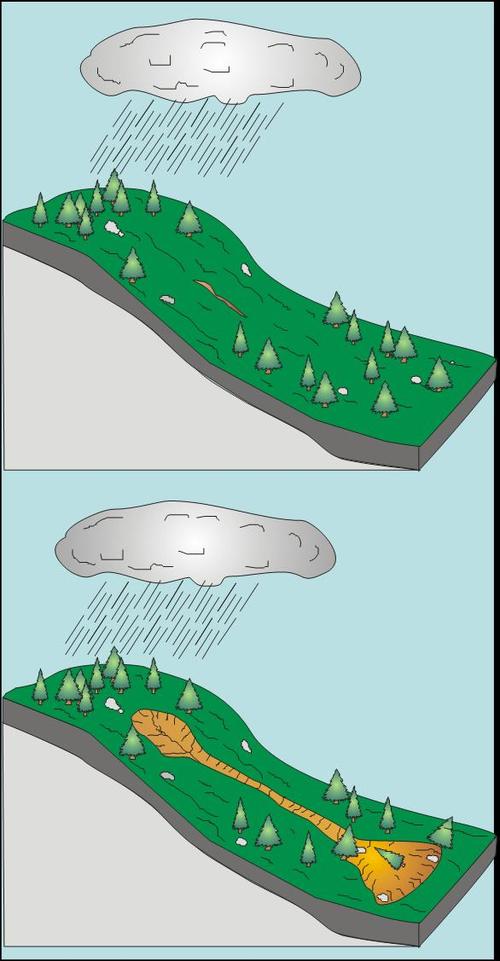Gravity Erosion
Processes of frost wedging can lead to gravity erosion on steep slopes
Image Credit: MBG
Slump mass-movement
Image Credit: MBG
Mass movement is an erosional process that moves rocks and sediments downslope due to the force of gravity. The material is transported from higher elevations to lower elevations where other transporting agents like streams or glaciers can pick it up and move to even lower elevations.
Some mass movement processes act very slowly, others occur suddenly, often with disastrous consequences
Any perceptible down-slope movement of rock or sediment is referred to in general terms as a landslide. It can be classifiedsuch that it reflects the mechanism responsible for the movement and the velocity at which the movement occurs.
Slumping occurs at steep hillsides, along distinct fracture planes, in some cases favored by water, often within materials such as clay. Once released, slumps may move rapidly downhill. They will often show a spoon-shape topographic depression where the material has begun to slide downhill.
Surface creep is the slow downhill movement of soil and rock debris. It is usually not perceptible except through extended observation. The term can also describe the rolling of soil particles by wind along soil surface.

